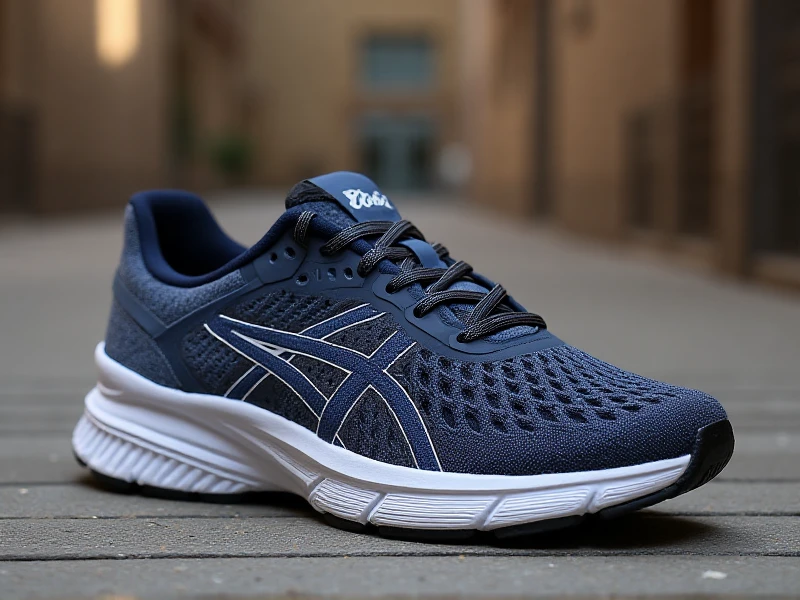The Ultimate Guide to Choosing the Best Men's Running Shoes for Performance & Comfort
2025-06-05

Sure! Here's an SEO-optimized article on men's running shoes (around 800 words), with a natural, human-written flow designed for Google ranking:
Finding the perfect pair of men's running shoes can feel overwhelming with countless brands, technologies, and styles flooding the market. But the right footwear isn't just about aesthetics; it's foundational to your performance, injury prevention, and overall running enjoyment. Whether you're a seasoned marathoner, a weekend jogger, or just starting your fitness journey, this comprehensive guide breaks down everything you need to know to invest wisely in your next pair of men's running shoes.
Why the Right Men's Running Shoes Matter
Running subjects your feet, ankles, knees, and hips to significant repetitive impact. Ill-fitting or unsupportive footwear can lead to common issues like shin splints, plantar fasciitis, blisters, and joint pain. Quality men's running shoes are scientifically engineered to address these challenges by providing:
1. Optimal Cushioning: Absorbs impact forces, reducing stress on joints. Technologies vary – from soft, plush foams for comfort to responsive, energy-returning foams for speed.
2. Crucial Support & Stability: Guides your natural foot motion, especially important if you overpronate (your foot rolls inward excessively) or supinate (your foot rolls outward). Look for features like medial posts or structured heels.
3. Effective Fit & Comfort: Prevents blisters and hot spots through anatomical shaping, breathable materials, and secure lacing systems.
4. Enhanced Traction & Durability: Outsoles with strategic rubber patterns grip various surfaces, while high-quality materials extend the shoe’s lifespan.
Key Factors When Buying Men's Running Shoes
Never choose based solely on brand loyalty or looks. Consider these critical aspects:
1. Your Foot Type & Gait:
Step 1: Determine Your Arch Type (Dry Foot Test): Wet your foot, stand on a paper bag or dark towel. A flat, full imprint indicates low arches (overpronation likely) needing stability or motion control shoes. A narrow band connecting heel and forefoot indicates high arches (supination likely), best suited for neutral or cushioned shoes offering flexibility and shock absorption. A curve with a noticeable arch indicates neutral arches, suitable for a wide range of neutral shoes.
Step 2: Observe Your Gait: Visit a specialty running store for a gait analysis. Treadmill video analysis helps professionals assess how your foot strikes and rolls (pronates), pinpointing your support needs.
2. The Right Running Shoe Type:
Neutral Cushioned Shoes: For neutral runners or supinators. Offer maximum cushioning and flexibility without corrective stability features. Great for efficient, natural gaits. (e.g., Nike Pegasus, ASICS Novablast, Brooks Ghost, Hoka Clifton).
Stability Shoes: Ideal for mild to moderate overpronators. Feature a denser foam post along the inner arch/heel or guide rails to gently control inward roll without overly restricting motion. (e.g., ASICS GT-2000, Brooks Adrenaline GTS, Saucony Guide).
Motion Control Shoes: Designed for significant overpronation. Offer the highest level of support through strong medial posts and robust heel counters. Often feature wider bases. (e.g., Brooks Beast, ASICS Gel-Foundation, New Balance 1340).
Maximalist Shoes: Characterized by extreme cushioning (very thick midsoles) for maximum shock absorption. Popular options like Hoka One One revolutionized this category. Suitable for runners prioritizing comfort over speed, heavier runners, or those prone to impact-related injuries.
Minimalist/Barefoot Shoes: Feature very thin soles, zero drop (heel-to-toe offset), and minimal structure, aiming for a "natural" foot strike. Require significant adaptation and aren't suitable for everyone.
3. Running Style & Terrain:
Road Running Shoes: Prioritize cushioning, lighter weight, and flexibility. Outsoles are designed for pavement.
Trail Running Shoes: Feature aggressive lugs for superior grip, added toe protection (rock plates), durable uppers, and often enhanced stability to handle uneven ground. Often have stiffer build.
Racing Flats / Performance Shoes: Lightweight, minimalist cushioning for speed (5Ks, 10Ks, marathons). Less durable and supportive, intended for race day or short speed sessions.
4. Proper Sizing & Fit:
Shop in the Afternoon: Feet naturally swell throughout the day. Try on shoes later in the day.
Thumb's Width Rule: Your longest toe should be about a thumbnail's width (roughly 3/8 inch or 1 cm) from the end of the shoe. This allows space for foot expansion during runs. NEVER hope shoes will "stretch out."
Wear Your Running Socks: Bring the socks you typically run in to ensure an accurate fit.
Check Width & Heel Lock: Your foot shouldn't spill over the sole's edges. The heel should fit snugly without slipping. Check the midfoot security. Use different lacing techniques if needed.
Try Before Buying: Walk, jog, ideally on a treadmill if possible. Trust how the shoe feels.
Top Trends in Men's Running Shoes (2024)
Super Foams: Brands continue developing proprietary lightweight foams (e.g., Nike ZoomX, PWRRUN PB by Saucony, FuelCell by New Balance, FF Blast by ASICS) that offer exceptional energy return and responsiveness without compromising cushioning.
Sustainability Focus: More brands are incorporating recycled materials (e.g., ocean plastics) into uppers, midsoles, and outsoles.
Versatility: Growth in "do-it-all" or "super trainer" shoes that blend cushioning and responsiveness for daily training (e.g., New Balance Fresh Foam X 880/1080, Saucony Ride/Triumph).
Caring For Your Men's Running Shoes
Don't neglect maintenance! Rotate between two pairs to allow the foam to decompress, increasing lifespan (typical lifespan: 300-500 miles). Avoid machine washing/drying unless specifically stated (spot clean). Keep them away from intense heat/cold.
Conclusion: Invest in Your Stride
The quest for the ideal pair of men's running shoes is a personal journey heavily influenced by biomechanics and goals. Avoid settling for fashion over function or price over proper fit. Investing time in understanding your needs and trying on multiple options, preferably with professional guidance, pays dividends in comfort, performance, and injury-free miles. Step into the right shoe, and every run becomes more rewarding.
Ready to find your perfect pair? Remember: listen to your feet, understand your run, and choose technology that supports your strides! Happy running!
Category: